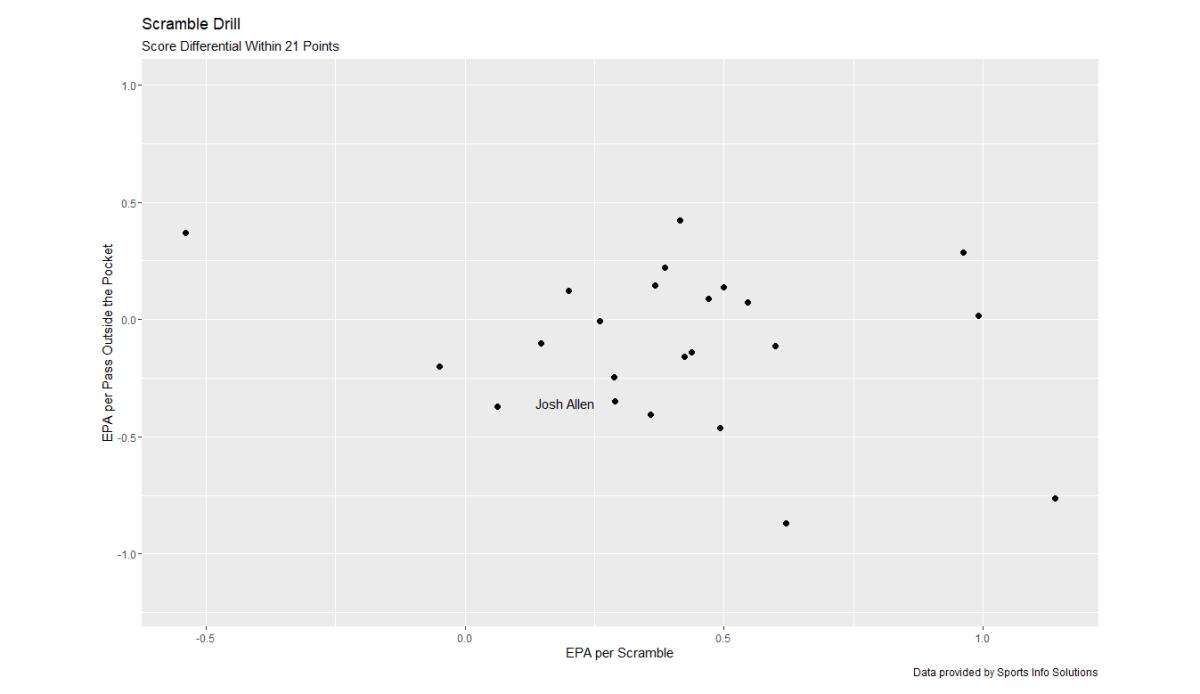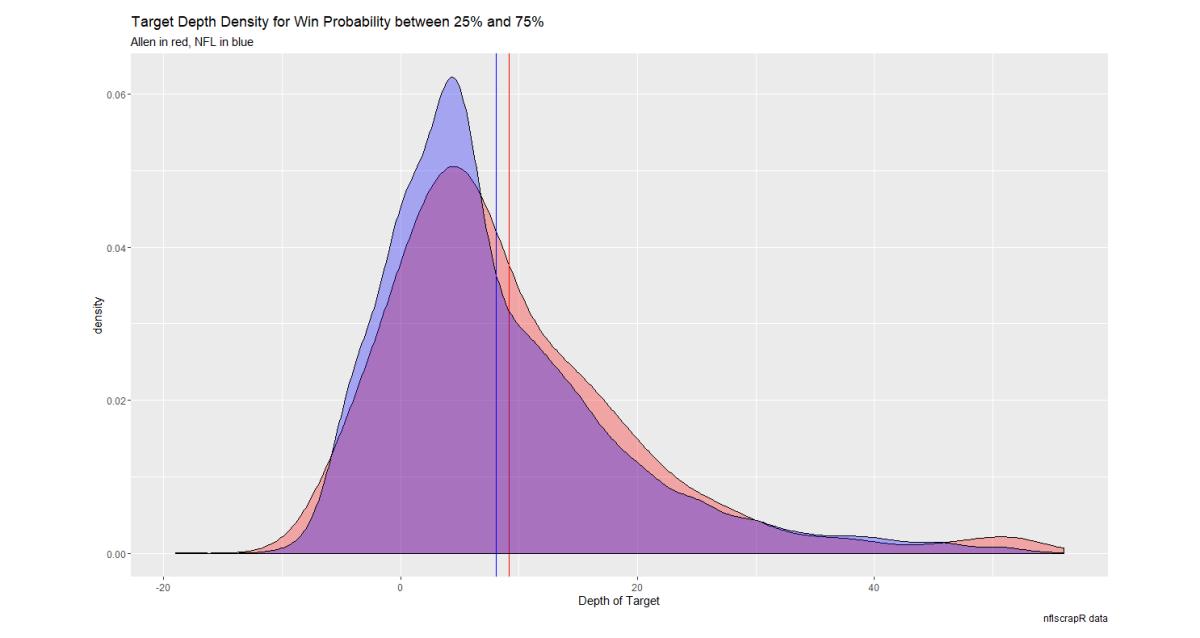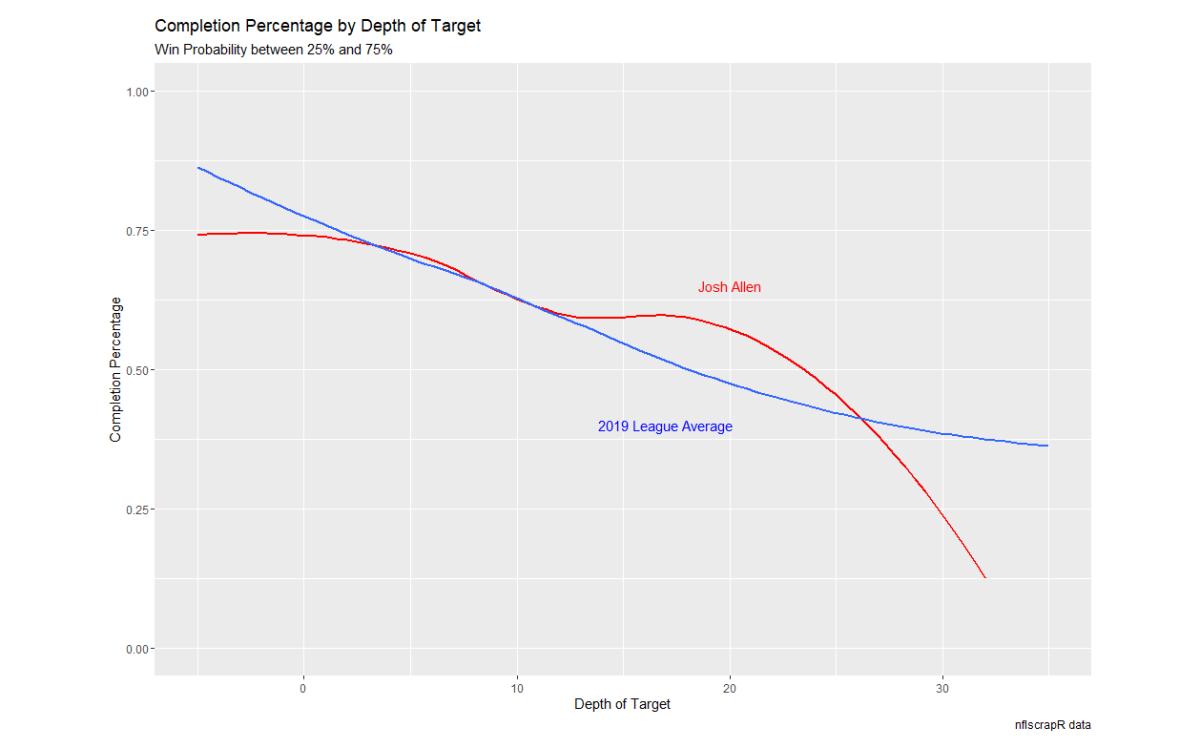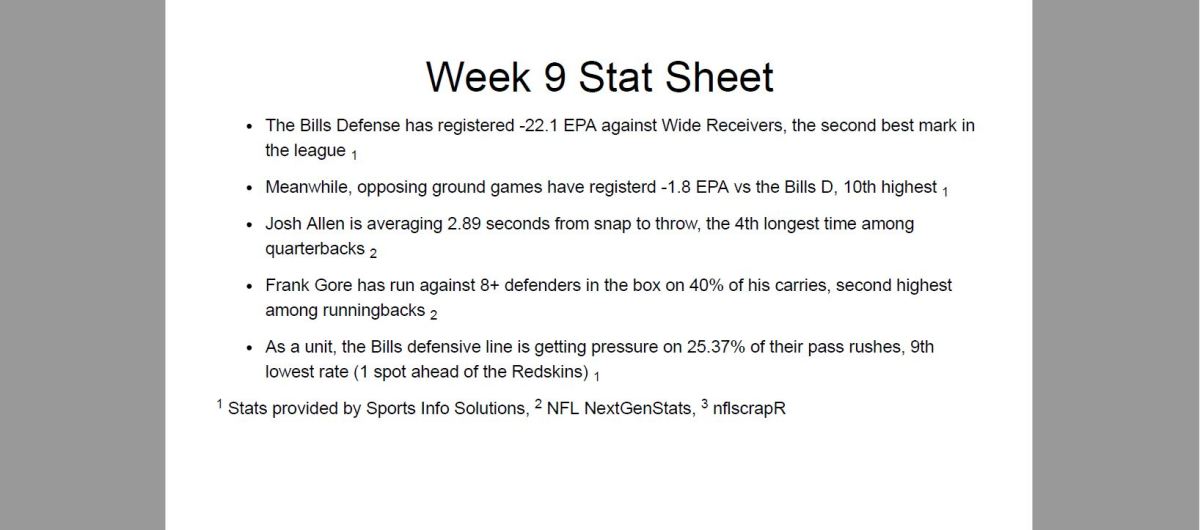Redskins begin second half with Bills opponent trying to rebound

As another week passes, and the loss column continues to rise, the painful grind of the 2019 season is setting in for Washington and its fanbase. We've reached the midway point, and Washington owns a 1-7 record. Clearly, the victories haven't come in terms of game results, but surely Terry McLaurin's spectacular rookie season can only be viewed as a win. Now Derrius Guice and Trent Williams are on the brink of returning/debuting this season, so there's at least some help on the way.
Even with all of this, there's no question the future of the franchise hangs on the arm and development of Dwayne Haskins. The rookie quarterback made his second appearance on the season when Case Keenum left the game with a concussion. The results were tumultuous (at best), as the team averaged -1.18 EPA per dropback with Haskins at the helm, including an interception in the redzone that reduced the Redskins win probability by 12%.
It's becoming clear that Haskins still needs time to learn and develop. While that isn't exactly great news considering the draft capital invested in him, it's not a career death sentence either. Bill Callahan and the coaching staff seem to be cognizant of Haskins's current ability, and they're willing to be patient in order to maximize his long-term success. Given their next opponent, waiting at least one more week doesn't seem all that terrible.
Next up, Washington visits the Buffalo Bills. Led by their own young quarterback, the Buffalo Bills own a 5-2 record and are firmly planted in contention for an AFC Wild Card spot. When entering the NFL, Josh Allen was viewed as a raw prospect, but possessed exceptional physical traits. With such overwhelming athleticism, it seemed natural that he would be the type of player to thrive in the chaos. Interestingly though, that hasn't been the case this year.

If we look at the chart above, we see the average EPA (Expected Points Added) for quarterbacks on scrambles (X-Axis) versus the average EPA generated on passes from outside the pocket (Y-Axis). You'll notice that several names are missing. That's because the graph only includes quarterbacks who have registered a scramble on the season. So comparing only within that subgroup, we have some interesting findings.
Allen's scrambles still appear to be a net-positive for his team as a whole, though they're not nearly as effective as we see from some other quarterbacks. In all likeliness, it's the volume of Allen's rushes that brings down his average. Several of these quarterbacks have run the ball less than 10 times on the season, so when they do choose to run, it's likely because it's simply too good of an opportunity to pass up.
Perhaps more surprising is the EPA from Allen's passes outside the pocket. In this case, Allen's running ability actually outranks his passing, as Allen is one of the lower tier quarterbacks on these throws (though still not as bad as Jameis Winston).
Aside from his running ability, the trait that sets Allen apart his arm-strength. Clocked at 62 mph at the Combine, it's hard not to be enamored by such an awesome display of physical ability. But does that trait translate to the barrage of long-range bombs we would expect?

Based on the density chart, it does appear that Allen likes to push the ball downfield more than the league average, as we see a higher proportion of his passes in the 7+ air yards range. The vertical lines represent Allen's average depth of target (red) versus the league average (blue). Again, these support the notion that he does indeed like to attack further down the field. Exploring things further, we can see how successful Allen has been on these passes by observing his completion percentage by depth of target.

Now we see that Allen not only attacks downfield more often, but he's generally finding more success in the 15-25 yard range relative to league average. He's attempted a few passes beyond this depth, but hasn't found much success there (yet). All of this should make for an interesting matchup, as Washington's defense is better than league average in terms of completion percentage allowed on deep balls.
The Bills have their eyes set on the a playoff berth, and they're coming off a loss at home to the Eagles. They'll certainly be refocused and ready to bounce back. The Stat Sheet will share some other metrics, including those that highlight the Bills stellar defense thus far.

